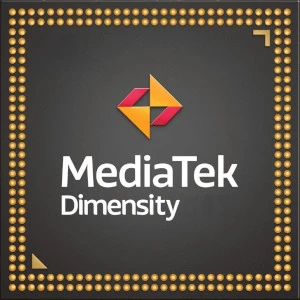MediaTek Dimensity 800 vs Unisoc Tiger T700
The Unisoc Tiger T700 and MediaTek Dimensity 800 are two processors that offer different specifications.
Starting with the Unisoc Tiger T700, it features a combination of Cortex-A75 and Cortex-A55 cores, with two Cortex-A75 cores running at 1.8 GHz and six Cortex-A55 cores also running at 1.8 GHz. This processor has a total of eight cores and is built on a 12 nm lithography process. It has an Instruction Set of ARMv8.2-A and a TDP of 10 Watts.
On the other hand, the MediaTek Dimensity 800 also offers a different architecture, consisting of four Cortex-A76 cores running at 2.0 GHz and four Cortex-A55 cores running at the same frequency of 2.0 GHz. This processor has a total of four cores and is built on a more advanced 7 nm lithography process. It also has an Instruction Set of ARMv8.2-A and a TDP of 10 Watts. Additionally, it comes with a Neural Processing Unit (NPU), which enhances its capabilities in AI-related tasks.
In terms of architecture, the Unisoc Tiger T700 has a higher number of cores compared to the MediaTek Dimensity 800. However, the Dimensity 800 compensates for this with a more advanced lithography process, providing potentially better power efficiency and performance. Furthermore, the Dimensity 800's inclusion of an NPU adds AI capabilities that the Tiger T700 lacks.
Overall, the choice between these two processors will depend on specific use cases and requirements. If multitasking and performance are key factors, the Unisoc Tiger T700's higher number of cores may be an advantage. However, if power efficiency and AI-related tasks are more important, the MediaTek Dimensity 800's advanced lithography and NPU could be more suitable.
Starting with the Unisoc Tiger T700, it features a combination of Cortex-A75 and Cortex-A55 cores, with two Cortex-A75 cores running at 1.8 GHz and six Cortex-A55 cores also running at 1.8 GHz. This processor has a total of eight cores and is built on a 12 nm lithography process. It has an Instruction Set of ARMv8.2-A and a TDP of 10 Watts.
On the other hand, the MediaTek Dimensity 800 also offers a different architecture, consisting of four Cortex-A76 cores running at 2.0 GHz and four Cortex-A55 cores running at the same frequency of 2.0 GHz. This processor has a total of four cores and is built on a more advanced 7 nm lithography process. It also has an Instruction Set of ARMv8.2-A and a TDP of 10 Watts. Additionally, it comes with a Neural Processing Unit (NPU), which enhances its capabilities in AI-related tasks.
In terms of architecture, the Unisoc Tiger T700 has a higher number of cores compared to the MediaTek Dimensity 800. However, the Dimensity 800 compensates for this with a more advanced lithography process, providing potentially better power efficiency and performance. Furthermore, the Dimensity 800's inclusion of an NPU adds AI capabilities that the Tiger T700 lacks.
Overall, the choice between these two processors will depend on specific use cases and requirements. If multitasking and performance are key factors, the Unisoc Tiger T700's higher number of cores may be an advantage. However, if power efficiency and AI-related tasks are more important, the MediaTek Dimensity 800's advanced lithography and NPU could be more suitable.
AnTuTu 10
Total Score
GeekBench 6 Single-Core
Score
GeekBench 6 Multi-Core
Score
CPU cores and architecture
| Architecture | 4x 2.0 GHz – Cortex-A76 4x 2.0 GHz – Cortex-A55 |
2x 1.8 GHz – Cortex-A75 6x 1.8 GHz – Cortex-A5 |
| Number of cores | 4 | 8 |
| Instruction Set | ARMv8.2-A | ARMv8.2-A |
| Lithography | 7 nm | 12 nm |
| TDP | 10 Watt | 10 Watt |
| Neural Processing | NPU |
Memory (RAM)
| Max amount | up to 16 GB | up to 4 GB |
| Memory type | LPDDR4X | LPDDR4X |
| Memory frequency | 2133 MHz | 1866 MHz |
| Memory-bus | 2x16 bit | 2x16 bit |
Storage
| Storage specification | UFS 2.2 | UFS 2.1 |
Graphics
| GPU name | Mali-G57 MP4 | Mali-G52 MP2 |
| GPU Architecture | Mali Valhall | Mali Bifrost |
| GPU frequency | 650 MHz | 850 MHz |
| Execution units | 4 | 2 |
| Shaders | 64 | 32 |
| DirectX | 12 | 11 |
| OpenCL API | 2.1 | 2.1 |
| OpenGL API | ES 3.2 | ES 3.2 |
| Vulkan API | 1.2 | 1.2 |
Camera, Video, Display
| Max screen resolution | 2520x1080@120Hz | 2400x1080 |
| Max camera resolution | 1x 80MP, 1x 32MP + 1x 16MP | 1x 48MP |
| Max Video Capture | 4K@30FPS | FullHD@60fps |
| Video codec support | H.264 (AVC) H.265 (HEVC) VP9 |
H.264 (AVC) H.265 (HEVC) |
Wireless
| 4G network | Yes | Yes |
| 5G network | Yes | Yes |
| Peak Download Speed | 2.77 Gbps | 0.3 Gbps |
| Peak Upload Speed | 1.2 Gbps | 0.1 Gbps |
| Wi-Fi | 5 (802.11ac) | 5 (802.11ac) |
| Bluetooth | 5.1 | 5.0 |
| Satellite navigation | BeiDou GPS Galileo GLONASS QZSS |
BeiDou GPS Galileo GLONASS |
Supplemental Information
| Launch Date | 2020 Quarter 2 | 2021 March |
| Partnumber | MT6873, MT6873V | T700 |
| Vertical Segment | Mobiles | Mobiles |
| Positioning | Mid-end | Low-end |
Popular comparisons:
1
MediaTek Helio G99 vs HiSilicon Kirin 960
2
MediaTek Helio G88 vs Qualcomm Snapdragon 625
3
Google Tensor G5 vs MediaTek Dimensity 1050
4
Unisoc Tiger T606 vs Qualcomm Snapdragon 8 Gen 2
5
MediaTek Dimensity 720 vs Qualcomm Snapdragon 820
6
Samsung Exynos 2400 vs Qualcomm Snapdragon 636
7
MediaTek Dimensity 9500 vs HiSilicon Kirin 659
8
MediaTek Dimensity 6020 vs Qualcomm Snapdragon 678
9
Qualcomm Snapdragon 435 vs MediaTek Helio G81
10
MediaTek Dimensity 8020 vs Samsung Exynos 990

